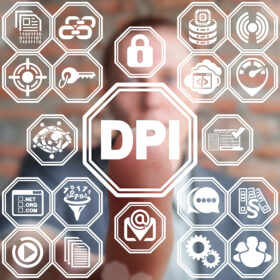5G Changes the Future of SASE
In the story of the six blind men and the elephant, each man feels a different part of an elephant’s body and then erroneously identifies the elephant as a tree, a snake, a fan, a rope, etc. It’s a bit like that with the secure access service edge (SASE). Depending on the vantage point, opinions differ about what SASE is and what capabilities are must-haves for “true” SASE.
In spite of these differences, people are betting big on SASE, which Gartner identifies as “the fastest growth opportunity in the networking and network security market.” Venture capitalists have invested hundreds of millions of dollars in it, as have software vendors acquiring companies to round out their SASE platforms. Gartner has predicted that end-users will spend $6.8 billion on it in 2022, up a whopping 42% from $4.8 billion in 2021.
This indicates that SASE, which in its simplest formulation is integrated networking and security delivered as a cloud service, is a concept well-aligned with major changes in the way we work. This includes digital transformation, remote and mobile work, the shift to cloud computing and SaaS apps and the rise of IoT. One aspect that’s often overlooked, however, is how perfectly it dovetails with another evolution on the horizon: the transition to 5G.
SASE, 5G and IT/OT/CT Convergence
In the recent Cloud Secure Edge and SASE Trend Report – 2021, research group Futuriom says that SASE represents “an important convergence of networking, cloud and applications security functions.” In addition, SASE represents the significant convergence of IT and OT networking. This can be seen as the definition of the “enterprise network” as it expands and evolves to include new types of connected objects and edge cloud services.
Over the next decade, 5G will accelerate this IT/OT convergence. It will also fold access and transport technologies from the telecom domain into this convergence, particularly in the case of private 5G deployments.
5G is not top of mind for most SASE vendors, but it should be. The 3GPP 5G specification is, after all, essentially a SASE blueprint, and this can have a profound impact on SASE roadmaps and the competitive landscape of the SASE market.
What’s the Link between 5G and SASE?
Unlike 2G, 3G and 4G/LTE, 5G isn’t just the next “G” that does the same thing as its predecessors, only better and faster. It is a complete architectural rewrite of the communications infrastructure.
The 3GPP 5G specification is less of a transport paradigm than a next-gen software-defined wide area network (SD-WAN) framework that reaches all the way back to the radio access network (RAN) and out to the clouds. It is, to put it simply, a blueprint for cloud-native, secure SD-WAN – just like SASE.
With 5G, a vendor can spin up an end-to-end virtual network that offers just the right connectivity and computing resources for a given use case, customer and/or application, and deploy this virtual private network across a shared, multi-tenant 5G infrastructure – this is advanced network slicing.
This slicing capability plus 5G’s revolutionary latency, throughput and reliability capabilities will support a wealth of new industrial, business and consumer services. These use cases will blur the line between communication, information and operational technologies.
What Does this Mean for SASE vendors?
It means that SASE vendors should embrace a more holistic view of what constitutes a ‘network’ and think of themselves as being in the CT, IT and OT business all at once. Each has traditionally had its own set of security threats and best practices, and each brings unique requirements for successfully orchestrating services from the cloud.
Standing back and seeing the elephant as a whole, while taking a very close look at where and how the parts fit together, will help future-proof your roadmap. It will also influence your build-buy-or-partner strategies. Finally, it will give you a different perspective on the SASE competitive landscape.
In fact, private 5G is already impacting this landscape. There are now a small number of cloud-native start-ups offering 5G SASE. There will be more start-ups and some established vendors seeking to do the same. There will be more telecom operators who see the potential value of converting their countless thousands of local access facilities into SASE PoP and edge nodes. There will also be content delivery and cloud infrastructure vendors (i.e., CDNs and hyperscalers) who see 5G as a vehicle for developing new SASE services. Consider, for example, Amazon’s recently released AWS Private 5G offering.
There are already a small number of visionary vendors who see in the 3GPP architecture the perfect blueprint for a secure, end-to-end, cloud orchestrated wide-area network – i.e., a SASE solution – no matter the access and transport technologies involved.
These are the vendors that will participate in and influence the growth of the SASE market. These are the vendors who will profit from the consolidations, integrations and M&A activities to become tomorrow’s big SASE players.
Article first published in The 5G Exchange





